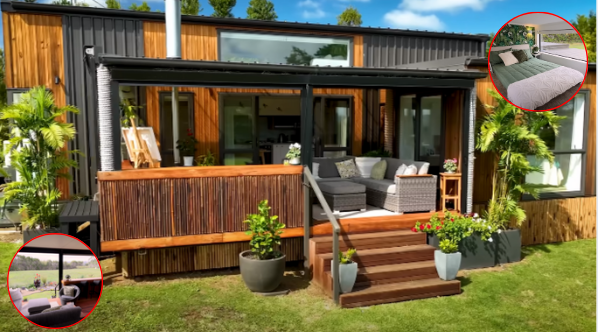Downsizing is increasingly becoming a popular lifestyle choice, especially for retirees seeking to free up money and resources to enjoy a better quality of life. For Sheila and her husband N, the move to a tiny house has been transformative. Their exquisitely designed tiny home embodies a perfect balance of functionality, comfort, and connection to nature, demonstrating how downsizing can lead to an enriched way of living.
A Path to Tiny Living
Sheila’s journey into tiny house living began somewhat skeptically. Initially, when her daughter Shay built her first tiny home, Sheila couldn’t imagine anyone living in such a small space. But Shay’s second tiny home, affectionately named Hazel, showcased a design that sparked Sheila’s interest. Sheila and N had been living in a large house that had started to feel empty and unused. This realization led them to seriously consider downsizing.
“The house was so lonely and quiet,” Sheila recalls. “We started thinking, maybe we should think about this tiny house idea.”
Soon, Sheila and N took the plunge, and the results have been nothing short of life-changing. They now live in a stunning tiny house on a picturesque 25-acre property with a lake, previously a persimmon farm. Their landlords, Lyn and her family, have been wonderfully supportive, further enhancing the experience.
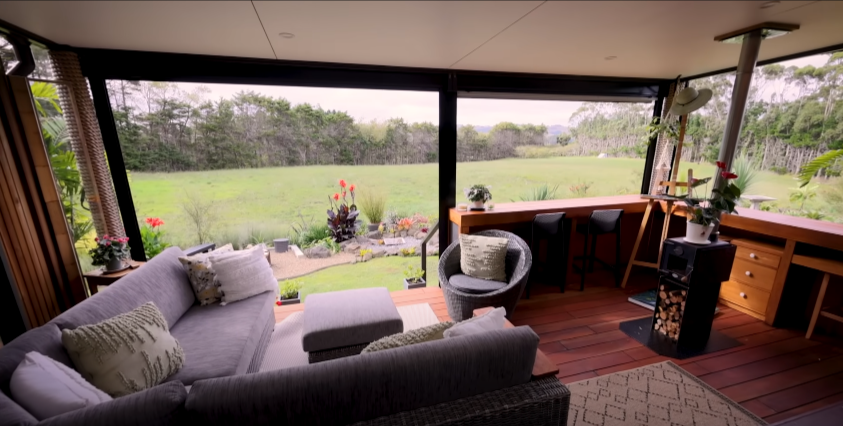
A Thoughtfully Designed Home
Sheila and N’s tiny house is a marvel of design and resourcefulness. Measuring 10.5 meters in length for the main house, with an additional 5.5-meter bedroom pod and a 6-meter deck, the home is a testament to efficient and sustainable living. Much of the house was constructed using leftover materials, adding a unique charm.
“The porch, for instance, was made from leftover materials from a work party,” Sheila explains. “I bought it at cost, and now it’s a beautiful feature of the house.”
The exterior combines iron sand and timber, blending seamlessly with the natural environment. The interior is equally impressive, with large windows that invite abundant natural light and provide stunning views of the surrounding gardens and landscapes. Sheila’s artistic touch is evident throughout, with carefully chosen textures, colors, and decorations creating a warm and inviting atmosphere.
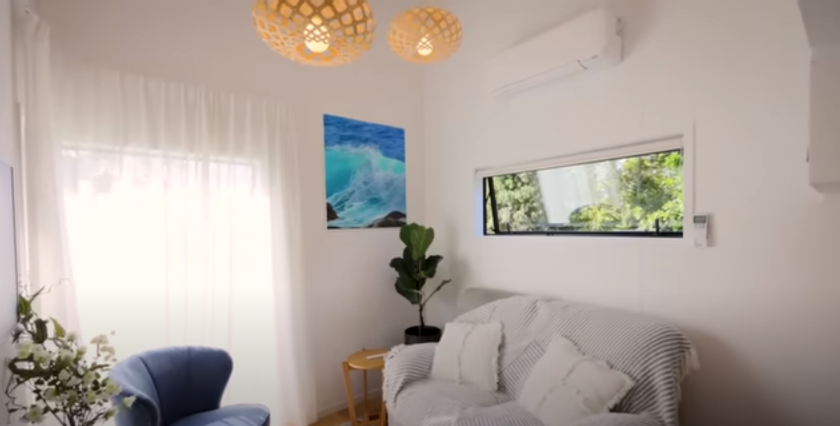
Indoor-Outdoor Living
One standout feature of Sheila and N’s tiny home is the seamless indoor-outdoor flow. The porch serves as their primary living room, designed for relaxation and entertaining. With screens that can be closed off for privacy and weather protection, the space is both functional and versatile.
“Even in winter, we spend most of our time outside,” Sheila says. “It gets surprisingly warm, and we love having the brazer going.”
The couple’s love for gardening is evident in the beautifully landscaped outdoor spaces. Sheila tends to the ornamental garden, while N takes care of the vegetable patch. Together, they’ve created a harmonious balance of aesthetics and practicality, incorporating edible plants into the ornamental beds.
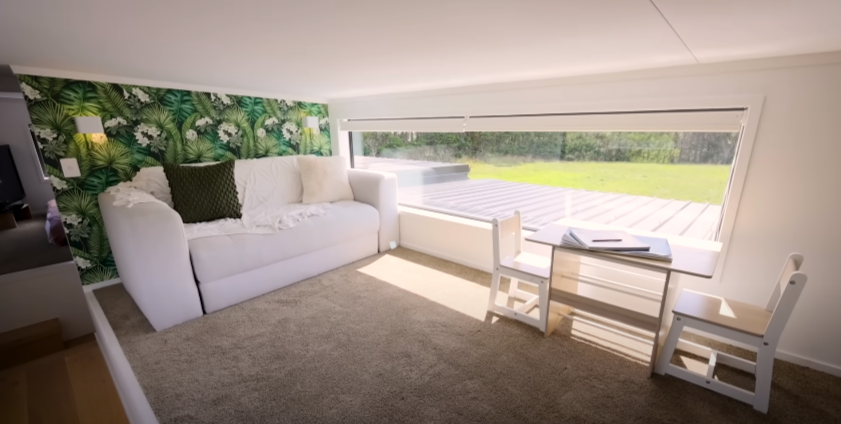
Off-Grid Independence
The tiny house is completely off-grid, powered by a robust solar system with 12 panels, two batteries, and a backup generator. The system is so efficient that Sheila and N have never run out of water, even during dry spells. A smart phone app allows them to monitor and manage their energy usage remotely, ensuring optimal efficiency.
“It’s so easy,” Sheila says. “I can even turn the generator on from my phone if needed.”
The Interior: A Space for Living and Creating
Inside the home, thoughtful design ensures every inch of space is utilized efficiently. The kitchen is fully equipped with modern conveniences, including a dishwasher, dual pantries, and custom pull-out shelves. The dining area features a compact table that expands to accommodate up to six people, perfect for hosting family and friends.
The living room is another highlight, boasting high ceilings, stylish light fixtures, and a cozy Lazy Boy chair where N can relax and watch sports. Sheila’s artistic flair is showcased in the choice of textured wallpaper and unique decorations, adding personality to the space.
“I wanted the living room to feel grand despite its size,” Sheila says. “The high ceilings and open plan achieve that beautifully.”
Space for Family
Despite its compact size, the tiny house comfortably accommodates guests. The loft areas serve dual purposes: one is a playroom and sleeping space for Sheila’s grandchildren, while the other can be converted into a guest room. The design ensures that Sheila’s family always feels welcome.
“My grandchildren love it here,” Sheila shares. “They adore the cozy loft and their playroom. It’s important to me that my home remains a place for family gatherings.”
A Retreat-Like Bedroom and Practical Bathroom
Sheila and N’s bedroom pod is a serene retreat, surrounded by large windows that offer stunning views. The room is adorned with family photos and soft decor, creating a space that feels both personal and peaceful. A walk-in wardrobe provides practicality, allowing N to get ready for work without disturbing Sheila’s rest.
The bathroom, designed for both function and aesthetics, features a full-sized shower and beautiful sea-inspired tiles. A second entrance near the bathroom adds convenience and safety.
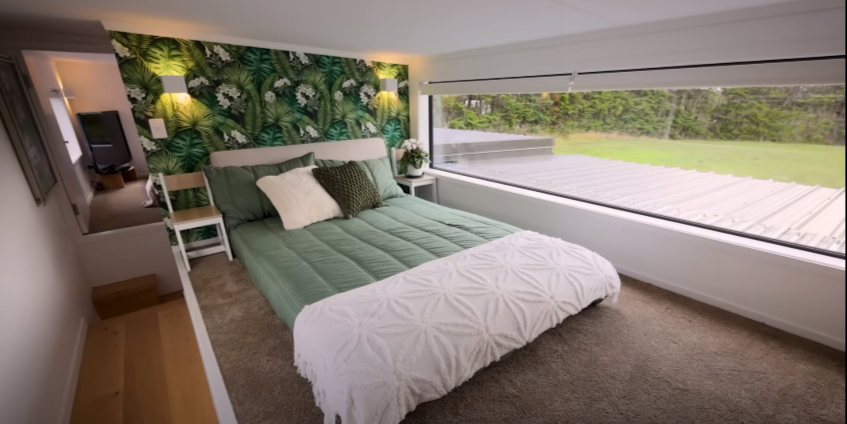
The Cost of Tiny Living
Building the tiny house cost approximately $300,000, with an additional $50,000 for the solar system. While tiny homes may not always be cheaper than traditional homes, Sheila emphasizes the value they provide.
“It’s a real house, built with the same quality as any other,” she says. “The biggest expenses in any home are the kitchen and bathroom, and tiny houses are no exception.”
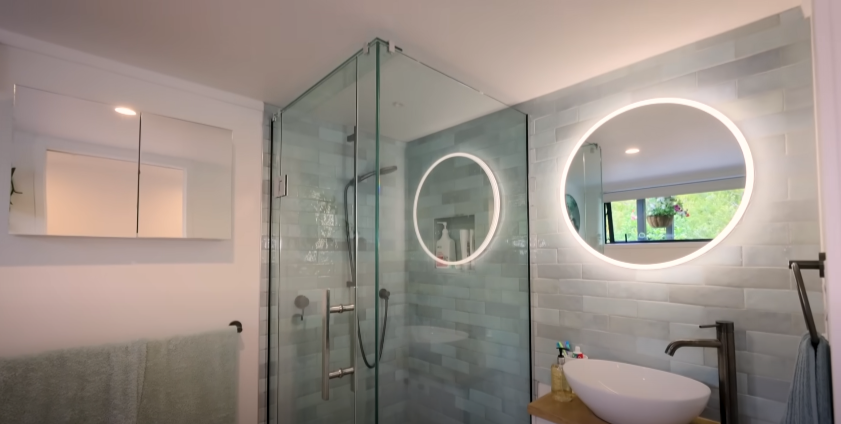
A Lifestyle Choice
After over a year of living in their tiny home, Sheila and N couldn’t be happier. The transition has brought them peace, simplicity, and a closer connection to nature and family.
“If I won the lottery, I wouldn’t change a thing,” Sheila declares. “I might buy the land, but I’d still live in this tiny house. It’s perfect for us.”
The couple’s tiny house also serves as a hub for family gatherings, proving that even the smallest spaces can bring people together. Sheila recalls hosting a World Cup rugby night with her entire family squeezed into the cozy living room.
“We didn’t need a massive lounge to be together,” she says. “That’s what makes this place so special.”
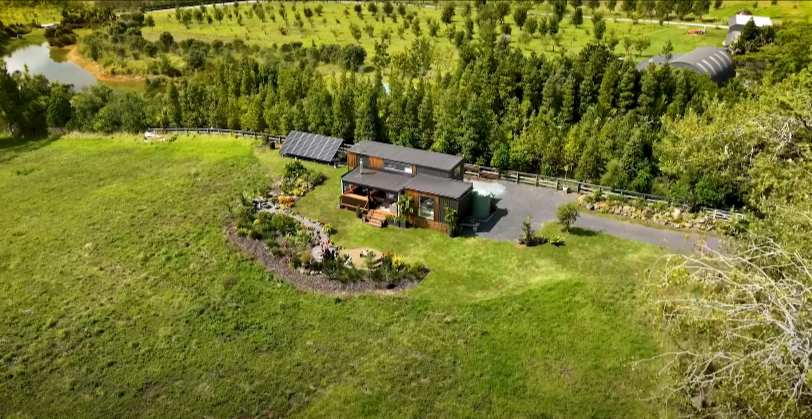
A Future of Contentment
For Sheila and N, the future looks bright. They plan to stay in their tiny house for as long as they can, enjoying the tranquility and simplicity it offers. Their story is a testament to the benefits of downsizing and the joys of tiny house living. In Sheila’s words:
Conclusion
Sheila and N’s journey into tiny house living offers inspiration for anyone seeking a simpler, more connected life. Their thoughtful transition from a large, underutilized home to a compact yet luxurious sanctuary demonstrates that downsizing isn’t about sacrificing comfort but rather enhancing quality of life. With a blend of practicality, sustainability, and creativity, their tiny house has become a home that celebrates family, nature, and contentment.
Their story underscores a powerful truth: fulfillment isn’t found in the size of a house but in the love, purpose, and memories that fill it. Sheila and N have embraced a lifestyle that proves less truly can be more—a sentiment that resonates deeply in a world increasingly drawn to sustainable and intentional living.
FAQS
What inspired Sheila and N to downsize and move into a tiny house?
Sheila and N were inspired by the realization that their large house felt empty and underutilized. Seeing their daughter Shay’s tiny home designs also encouraged them to embrace a simpler lifestyle.
How big is Sheila and N’s tiny house?
The main house measures 10.5 meters in length, with an additional 5.5-meter bedroom pod and a 6-meter deck, combining functionality and spaciousness.
What is the cost of their tiny house?
The total cost of their tiny house was approximately $300,000, with an additional $50,000 for a fully off-grid solar power system.
How is the tiny house powered?
The home is completely off-grid, powered by a solar system with 12 panels, two batteries, and a backup generator. They can monitor and control the system via a smartphone app
